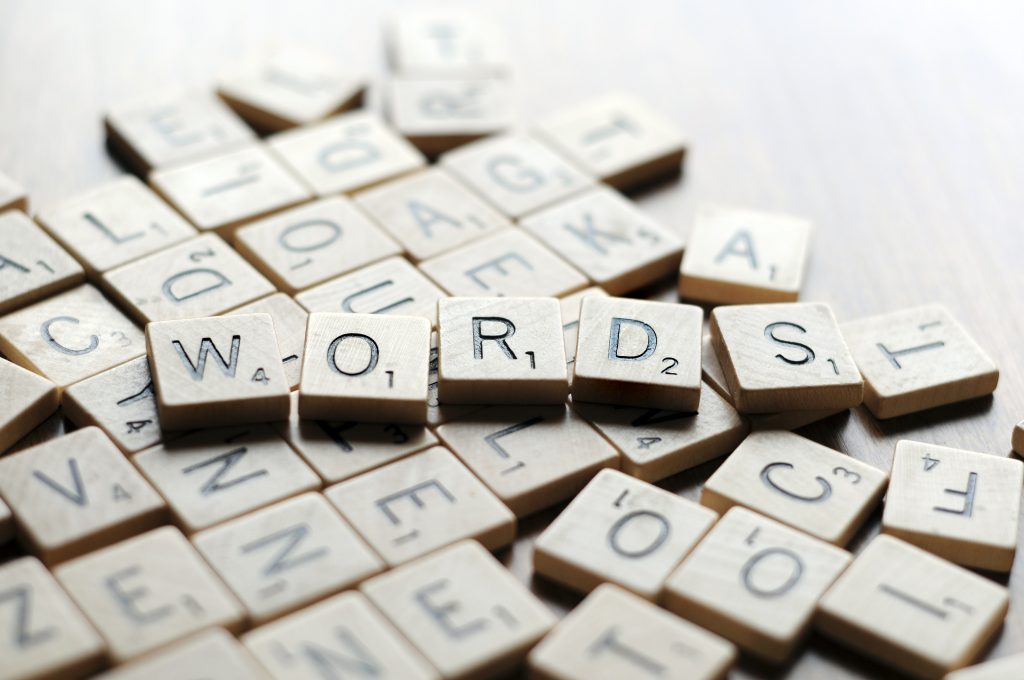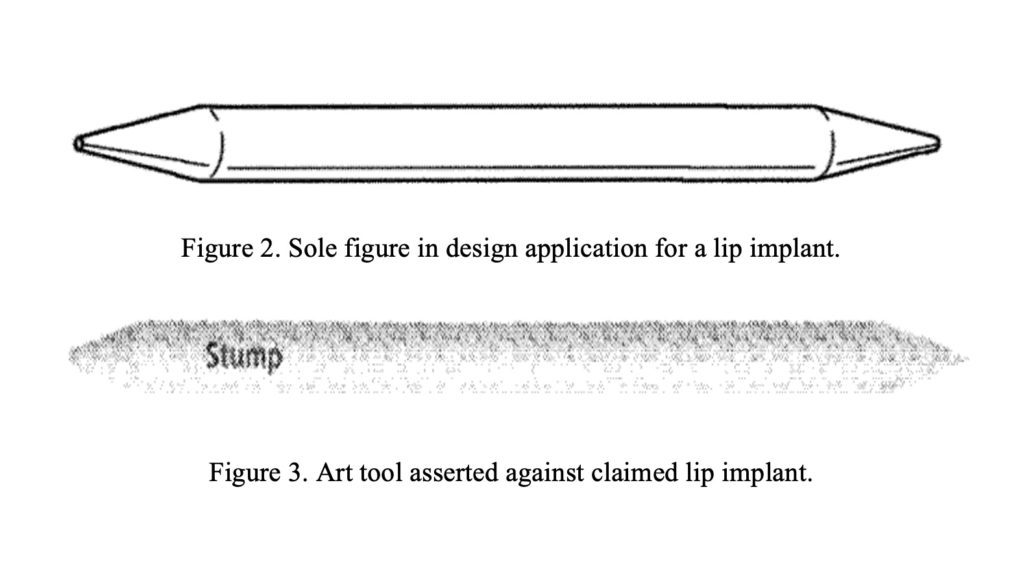“Two recent Federal Circuit decisions highlight the importance of the words in the title and claims of a design patent when seeking and enforcing a patent.”
 Is the scope of a design patent determined by the figures alone? Two recent Federal Circuit decisions highlight that the words describing the article of manufacture in the title and claims can indeed limit the scope and enforceability of a design patent. In particular, the title and claims of the design patent contain important information that provide a more accurate and predictable notice of what is and is not protected by the design patent. Thus, the title and the claims of a design patent are particularly relevant to the scope of the patent—both for procurement and enforcement.
Is the scope of a design patent determined by the figures alone? Two recent Federal Circuit decisions highlight that the words describing the article of manufacture in the title and claims can indeed limit the scope and enforceability of a design patent. In particular, the title and claims of the design patent contain important information that provide a more accurate and predictable notice of what is and is not protected by the design patent. Thus, the title and the claims of a design patent are particularly relevant to the scope of the patent—both for procurement and enforcement.
Design Patents
Under 35 U.S.C. § 171(a), design patent protection is permitted to “[w]hoever invents any new, original, and ornamental design for an article of manufacture.” So, to be eligible for a design patent, the design must be tied to an article of manufacture. A design that is isolated from a particular article of manufacture, such as a symbol on its own, is ineligible for patent protection as being directed to nonstatutory subject matter. M.P.E.P. § 1504.01. “Design is inseparable from the article to which it is applied and cannot exist alone merely as a scheme of surface ornamentation.” M.P.E.P. § 1502.
The title of the design patent must identify the particular article. M.P.E.P. § 1503.01(I). “The title of the design identifies the article in which the design is embodied by the name generally known and used by the public and may contribute to defining the scope of the claim.” Id. Further, “the title and the claim must correspond.” Id. A design patent includes a single claim, and if the specification has a proper description of the design, the claim must read: “The ornamental design for (the article which embodies the design or to which it is applied) as shown and described.” M.P.E.P. § 1503.01(II).
Scope of a Design Patent in Curver
On September 12, 2019, the Federal Circuit ruled that the scope of a design patent can be determined by its title when the figures do not depict an article of manufacture. Curver Luxembourg, SARL, v. Home Expressions, Inc., 938 F.3d 1334 (Fed. Cir. 2019). In Curver, the design patent owned by Curver was titled, “Pattern for a Chair” but the figures illustrated only a geometric pattern of an overlapping “Y” design. Id. at 1337; see Figure 1 below. When Curver sued Home Expressions for infringement of its design patent for selling storage baskets using the similar overlapping “Y” design, Home Expressions moved to dismiss the case, and the District Court of New Jersey granted the motion. Id. at 1337-38. In doing so, the district court construed the scope of Curver’s patent as limited to an ornamental design for a chair. Id. at 1338.

Figure 1. Overlapping “Y” design of Figure 1 from the design patent.
On appeal, Curver made several arguments in support of a broader scope of protection beyond the “Y” pattern on a chair. First, Curver argued that the scope of the design patent was based on the depiction in the drawings, and not the title or accompanying text. Id. at 1339. In response, the Federal Circuit stated that “claim language can limit the scope of a design patent where the claim language supplies the only instance of an article of manufacture that appears nowhere in the figures.” Id. at 1340.
Second, Curver argued that the district court limited the claim by improperly applying prosecution history estoppel. Id. at 1341. As filed, the design application was originally titled “Furniture (Part Of).” Id. The Examiner, however, found the “part of” a piece of furniture too vague under 37 C.F.R. § 1.153 and suggested amending the title to “Pattern for a Chair,” and Curver amended the title, claim, and specification accordingly. Id. In response, the Federal Circuit held that the district court properly applied prosecution history estoppel since the amendment to the title “Pattern for a Chair” was made pursuant to the requirement necessary to secure the design patent. Id. at 1341-42.
Third, Curver argued that the court misapplied the test for infringement based on In re Glavas, 230 F.2d 447, 450 (CCPA 1956), which, according to Curver, suggested that a surface ornamentation for an article of manufacture can be anticipated by a prior art article that shares the same surface ornamentation even when the prior art article is non-analogous to the article shown in the design patent. Id. at 1342. In response, the Federal Circuit held that Glavas’s dictum did not state that a design patent can be “anticipated by an unrelated article with a very different physical appearance and form.” Id. at 1342-43. Further, even if Glavas’s dictum did allow anticipation by articles of manufacture that looked distinctly different, the court reasoned that the standard for determining design patent infringement is the “ordinary observer” test in Egyptian Goddess, Inc. v. Swisa, Inc., 543 F.3d 665 (Fed. Cir. 2008). Under the “ordinary observer” test, the court held that no “ordinary observer” would be deceived into purchasing Home Expression’s storage baskets believing them to be Curver’s patterned chairs. Id. at 1343. As such, the court dismissed Curver’s reliance on Glavas and affirmed the grant of the motion to dismiss.
Applicable Prior Art in In re SurgiSil
Post-Curver, the Federal Circuit issued a decision clarifying that the applicable prior art must be based on the “article of manufacture” to which the claim applies. In re SurgiSil, L.L.P., 14 F. 4th 1380 (Fed. Cir. 2021).
SurgiSil’s design application claimed a design for a lip implant, which was rejected as anticipated by a prior art reference disclosing an art tool. Id. at 1381; see Figures 2 and 3 below. The Patent and Trial Appeal Board (PTAB) affirmed the rejection, finding the differences in shape between the claimed design and art tool to be minor. Additionally, the PTAB ignored SurgiSil’s argument that the art tool cannot anticipate as it discloses a “very different” article of manufacture than a lip implant and found it “appropriate to ignore the identification of the article of manufacture in the claim language.” Id. SurgiSil appealed the PTAB’s decision, and the Federal Circuit reversed, holding that the anticipation finding was based on an erroneous interpretation of the claim. The court concluded that the art tool was ineligible for citation against SurgiSil’s lip implant, because SurgiSil’s claim was limited to the article itself, namely a lip implant, and “does not cover other articles of manufacture.” Id. at 1382.

Practical Takeaways
These two recent Federal Circuit decisions highlight the importance of the words in the title and claim of a design patent when seeking and enforcing a patent. When preparing a design application, an applicant may want to carefully consider how the design patent would be enforced, as the title may unintentionally limit the scope of protection. While the title needs to be descriptive of the article of manufacture, it should not be overly broad. See M.P.E.P. §1503.01(I). For instance, as was the case in Curver, when an Examiner suggests a change to the title during prosecution, an applicant should carefully weigh the implications of such an amendment on the scope of the issued design patent. Instead of accepting the Examiner’s suggestion, the title could perhaps have been amended to “Pattern for Furniture”, which is more in line with the initial title but may not have covered the accused product, or “Textile Fabric”, which may be broad enough to capture the accused product. Once the design patent issues, if the title is considered too narrow, a broadening reissue application may be considered for filing within two years of the issue date. See M.P.E.P. §1457.
Additionally, when considering the allowability or the validity of a design patent, what constitutes prior art to invalidate the design patent should be carefully considered. As the applicable prior art is based on the article of manufacture to which the claim applies, prior art in an analogous field as that identified in the claim needs to be identified. As such, when preparing a design patent application, the words used to recite the claimed invention should be carefully selected, as these will affect both the prior art cited by the Examiner during prosecution and asserted during any enforcement of the design patent. For example, in SurgiSil, if the application had simply claimed a “cylindrical tool” instead of a “lip implant”, the design patent may not have issued.
As such, considering the two recent Federal Circuit decisions, the words in the title and the claim should be carefully considered when seeking to obtain or enforce a design patent.
Image Source: Deposit Photos
Image ID:4638011
Copyright:vlue

![[IPWatchdog Logo]](https://ipwatchdog.com/wp-content/themes/IPWatchdog%20-%202023/assets/images/temp/logo-small@2x.png)


![[Advertisement]](https://ipwatchdog.com/wp-content/uploads/2024/04/Patent-Litigation-Masters-2024-sidebar-early-bird-ends-Apr-21-last-chance-700x500-1.jpg)

![[Advertisement]](https://ipwatchdog.com/wp-content/uploads/2021/12/WEBINAR-336-x-280-px.png)
![[Advertisement]](https://ipwatchdog.com/wp-content/uploads/2021/12/2021-Patent-Practice-on-Demand-recorded-Feb-2021-336-x-280.jpg)
![[Advertisement]](https://ipwatchdog.com/wp-content/uploads/2021/12/Ad-4-The-Invent-Patent-System™.png)







Join the Discussion
One comment so far.
Charles L. Mauro CHFP
April 20, 2022 12:30 pmExcellent overview and very relevant points